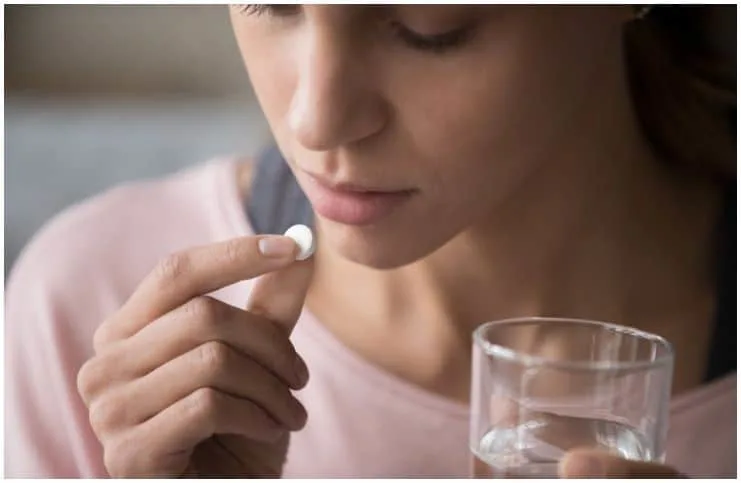Compare Colace vs MiraLax:
Introduction
Constipation is a condition in which an individual has infrequent or uncomfortable bowel movements.
If constipation persists for more than 90 days, it is considered chronic.
Statistics
According to the National Institute of Diabetes and Digestive and Kidney Diseases, in the United States, constipation is one of the most common gastrointestinal problems, affecting over 43 million Americans.
In addition, it is the reason for over 715,000 emergency department trips and millions of clinic visits per year.
Causes
The condition has numerous causes, however, it is commonly the result of the slow movement of food through the digestive system.
A wide range of factors can lead to constipation, including:
- ignoring the urge to go (poor bowel habits);
- lack of dietary fiber in the regular diet;
- nerve damage;
- sedentarism (lack of physical activity);
- stroke;
- low fluid intake;
- Parkinson’s disease (a degenerative disease of the nervous system);
- hypothyroidism;
- diabetes mellitus;
- multiple sclerosis (a disease that can affect your spinal cord, brain, and optic nerves);
- colon polyps;
- changes in your daily routines or life;
- celiac disease (when the small intestine becomes inflamed);
- irritable bowel syndrome (a functional gastrointestinal disorder that is characterized by altered bowel habits and abdominal pain);
- using enemas frequently;
- the use of certain medications, like – painkillers, antidepressants, iron supplements, antacids, antispasmodics, anticonvulsants, calcium channel blockers, or Parkinson’s disease drugs;
- often taking laxatives.
Symptoms
Recent criteria define constipation as at least 2 of the following symptoms in the last 90 days:
- the need to manually help evacuate stool;
- less than 3 bowel movements a week;
- a feeling that the person hasn’t voided completely;
- a sensation that the anorectal region is blocked;
- straining;
- a lumpy stool or a hard stool.
When to Call the Doctor
See your doctor if:
- you are losing weight without trying;
- you have never been constipated before now;
- you have noticed blood in the stools;
- you have stomach pain.
Complications
The most common complications are:
- anal fissures;
- irritation;
- rectal bleeding;
- discomfort;
- hemorrhoids.
Treatment
Treatment for constipation typically includes the following:
- drinking lots of liquids (herbal tea and water are best);
- getting more physical exercise to stimulate the bowels; it is recommended to do daily exercises, such as a brisk half-hour walk; you can also do about 150 minutes of moderate physical activity per week;
- avoiding processed foods;
- taking probiotics – healthy gut bacteria are essential in keeping the immune system and digestive tract healthy;
- eating a high-fiber diet of whole grains, nuts, vegetables, legumes, seeds, and fruits. There are two types of dietary fiber: insoluble and soluble. Insoluble fiber sweeps things out like a broom, while soluble fiber soaks things up like a sponge. The large intestine requires both types of fiber to function correctly.
Medications
If your bowel movements do not return to normal with the above treatments, your doctor may recommend medications, such as:
- stool softeners;
- bulk-forming laxatives;
- combination medications;
- lubricants;
- stimulant laxative;
- osmotic laxatives.
Here Is A Comparison Between A Stool Softener And A Laxative Solution That Are Effective In Relieving The Symptoms Associated With Constipation:
Colace
The active ingredient in Colace is docusate, a medication that is part of a family of laxatives called stool softeners (emollients).
These medications work by actively drawing fats and water into the stool, and easing bowel movements.
Miralax
The active ingredient in Miralax is Polyethylene Glycol (PEG) 3350, a common over-the-counter laxative that is used in the treatment of constipation.
Uses
Colace is used to treat and prevent constipation caused by hard stools.
Miralax is used as a laxative to treat irregular bowel movements or constipation. Note – it may take polyethylene glycol 3350 up to 4 days to work.
Mechanism of Action
Colace works by increasing the amount of water the stool absorbs in the large intestine, making the stool easier to pass.
Miralax works by causing water to be retained within the stool.
Side Effects
Adverse events associated with Colace include the following:
- dehydration;
- vomiting;
- dizziness;
- nausea;
- rectal bleeding;
- muscle weakness;
- muscle cramps;
- skin rash;
- stomach discomfort.
Adverse events associated with Miralax include the following:
- worsening stomach pain;
- nausea;
- excessive intestinal gas;
- rectal bleeding (known medically as hematochezia);
- abdominal cramping;
- blood in your stools;
- bloody diarrhea;
- increased sweating;
- bloating;
- dizziness;
- upset stomach.
ALSO READ: Delsym vs Robitussin
Dosage
The recommended dosage for Colace is as follows:
- children ages 2 to 12 – 1 to three 50 mg capsules per day;
- children over age 12 and adults – 1 to six 50 mg capsules per day;
- adults – 1 to three 100 mg capsules per day for up to seven days.
If your child is taking docusate, she or he should get plenty of liquids (avoid soda). It should only be taken by mouth. It can be taken without or with food.
The recommended dosage of Miralax is about 1 heaping tablespoon (17 g) of powder a day in 4 to 8 ounces of water.
Warnings & Precautions
Avoid the use of Colace if you have:
- nausea;
- intestinal obstructions;
- abdominal pain;
- hemorrhoids;
- anal bleeding;
- rectocolitis (inflammation of the rectum – the final straight portion of the large intestine);
- inflammatory bowel disease;
- anal fissure.
Do not use polyethylene glycol 3350 for longer than seven days unless your healthcare professional recommends it.
Do not use it more than once per day.
Also, do not take Miralax if you have an allergy to polyethylene glycol 3350 or kidney disease.
ALSO READ: Theraflu vs Nyquil
Drug Interactions
Docusate may interact in a negative way with the following medications:
- mineral oil (a liquid mixture of hydrocarbons that is produced from petroleum).
Polyethylene glycol 3350 may interact in a negative way with the following medications:
- prednisone (a corticosteroid that works on the immune system to help relieve redness, swelling, allergic reactions, and itching);
- albuterol (a short-acting beta-2 adrenergic agonist);
- Linzess (a drug that is used to treat irritable bowel syndrome);
- Cipro (an antibiotic that is part of the family of medications known as quinolones).
ALSO READ: Nexplanon vs Depo
Alcohol
Avoid alcohol intake while taking docusate as it will worsen your symptoms by causing dehydration.
It is recommended that you avoid the intake of alcoholic beverages while taking Miralax since drinking alcohol might worsen side effects caused by polyethylene glycol 3350 and can cause stomach problems.
Is It Safe During Pregnancy or Breastfeeding?
Docusate is considered safe to use during breastfeeding or pregnancy since stool softeners do not directly affect the digestive tract muscles.
Miralax is considered safe for short-term use during pregnancy. Regarding breastfeeding, it has minimal maternal systemic absorption, however, there are no human clinical studies regarding adverse effects on milk production or the risk of infant harm.
Conclusion: Colace vs MiraLax
In conclusion, both are effective, but Miralax is considered safer and more effective than Colace for the treatment of acute and chronic constipation.
Sourceshttps://www.amjmed.com/article/S0002-9343(16)30446-6/fulltext https://jamanetwork.com/journals/jamapediatrics/fullarticle/481370 https://www.researchgate.net/publication/6903577_A_Randomized https://gut.bmj.com/content/46/4/522.short
